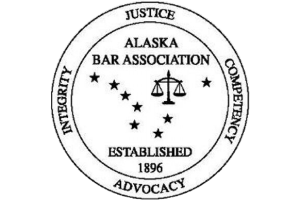- Free Consultation: (907) 277-3090 Tap Here to Call Us
Alaska Emergency Planning

Alaska Emergency Planning – the United States has observed National Preparedness Month each September since 2004, encouraging Americans to prepare for possible disaster. Combined with back to school and winter planning, September is ideal for emergency preparation throughout Alaska.
The Ready Campaign
FEMA’s Ready Campaign raises awareness about the importance of preparation including Alaska emergency planning. Gathering emergency supplies, such as food, water, a first aid kit and a radio; Working with your family; creating an emergency plan; Knowing where to go during an evacuation if you must leave leave your home. Prepare now and when an emergency arises, your family will be ready.
Alaska Emergency Planning Starts at Home
The Ready Campaign’s 2025 emergency preparedness theme focuses on getting back to the essentials of preparedness. In addition to sharing the tips, messages and graphics you can find on through The Ready Campaign and The Alaska Division of Homeland Security and Emergency Management Planning Section, there are four key actions you can take when Alaska emergency planning for any disaster you may face:
Know Your Risk
The best way to develop an Alaska emergency plan is to know what could happen where you and your family live. This helps you figure out what you need to do to stay safe in an emergency. You can explore various disasters and emergencies identified through The Ready Campaign on The Ready Campaign’s Information Site.
Make An Alaska Emergency Plan
Work with your family to create an emergency plan. Discuss an evacuation route, where to meet up if you become separated, how you will receive emergency alerts and build an emergency kit. Draw up a plan that everyone understands and then practice it so it becomes second nature to everyone. Go to The Ready Campaign’s Planning Section for a template to use when creating a family Alaska Emergency Plan.
Emergency Kit
Build an Alaska Emergency Plan kit that is specific to your family’s needs. For example, if a relative takes prescriptions for a health concern, make sure there are plenty on hand. Also, if there is an infant, make sure to have formula, bottles, diapers and wipes in your kit.
Ensure all important legal documents, insurance documents and bank information is stored electronically or is kept in a water proof container. Phone chargers, batteries, masks, hand sanitizer and a flashlight should also be kept in the Alaska Emergency Plan kit. Perishable food items, a can opener, garbage bags, plastic bags, toilet paper and paper towels should be included as well. Visit The Ready Campaign’s Emergency Kit Section for more ideas on what to include in your kit.
Community Involvement
Emergencies arise quickly, and emergency responders aren’t always nearby. You might save a life by taking action immediately. Learn basic life-saving techniques by taking a first aid class in your community as part of you Alaska Emergency Planning.
Visit the Alaska Division of Homeland Security and Emergency Management Preparedness Section for training on basic disaster response skills, such as fire safety, light search and rescue, team organization and disaster medical operations for your community.
Take a free online independent study course through FEMA’s Emergency Management Institute or a CPR course through the American Red Cross and learn more about helping your community become more prepared.
Johnson Law has been serving Alaskans for nearly 30 years. It’s who we are. Call Johnson Law at (907)277-3090 or use our Contact Form to discuss your serious injury case. We are here to serve you.
And while we hope you never need us… We’re here if you do. ~ Doug Johnson
Source: The Ready Campaign
Image Source: Alaska Division of Homeland Security and Emergency Management







